It’s a necessary skill to have and makes the world of difference when you’ve mastered it and find yourself in a rush – parking. Breaking down the different parking types and the scenarios that they’re best suited for can be overwhelming when you’re learning to drive, and can be a skill that is forgotten for experienced drivers.
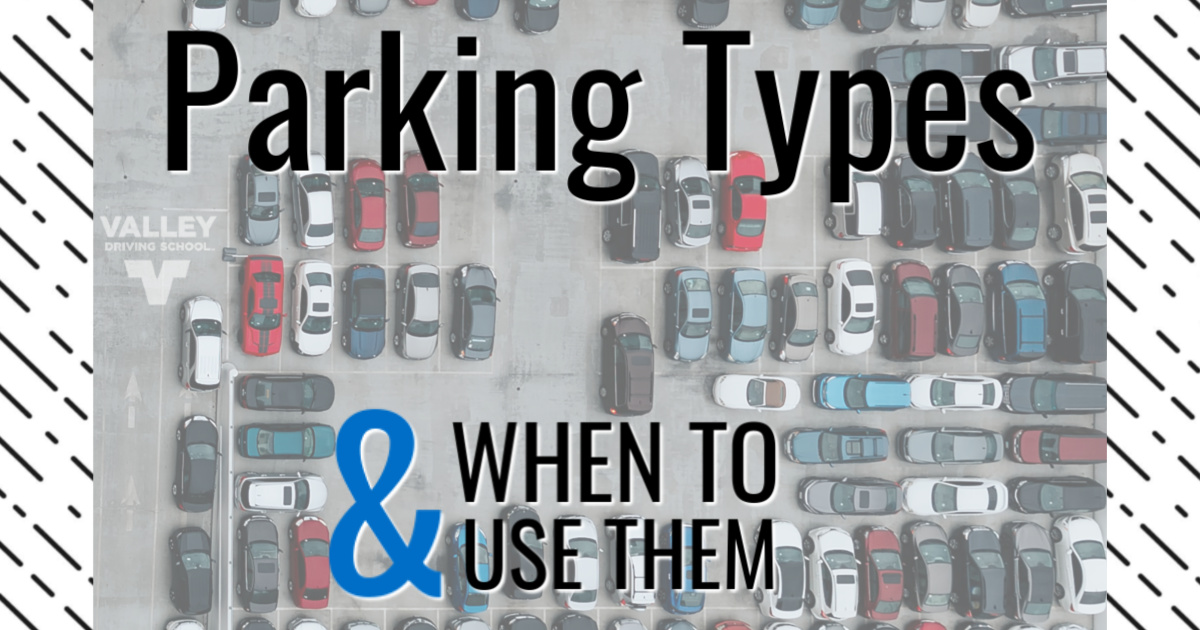
This week’s post is focused on making sense of all those parking types and when to use them!
Pull-through Parking
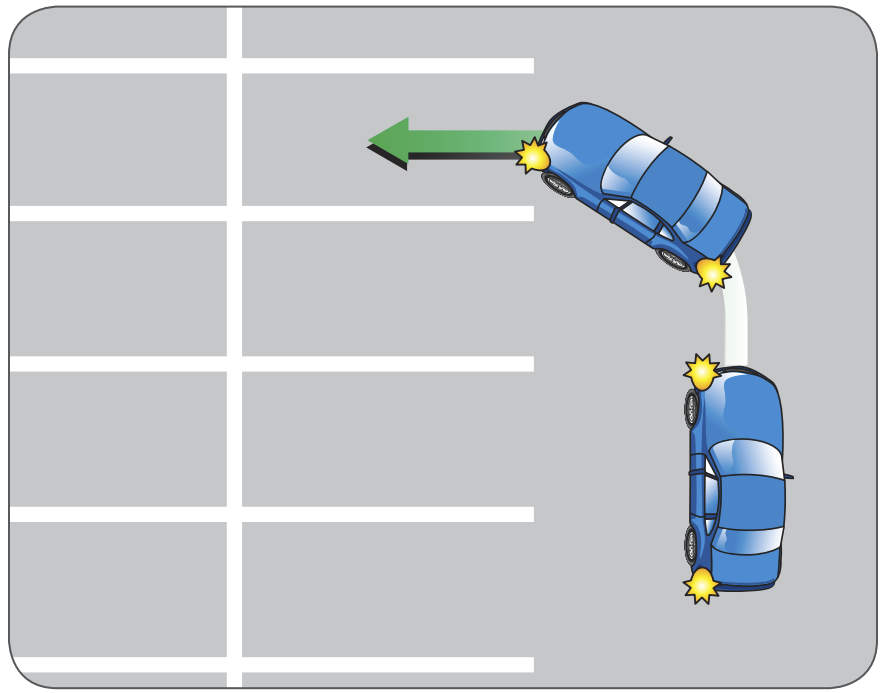
The majority of people will opt for that elusive pull-through stall whenever they get the chance so that they have the best of both worlds – clear visibility pulling, and clear visibility pulling out. For this reason, a pull-through stall can be your priority not just for ease, but safety as well. After all, the ability to see what you’re driving into when you’re leaving a busy lot where pedestrians are crossing, vehicles are passing, and others are trying to get out of their stalls too, is what makes pull-through stalls so coveted.
Reverse Stall Parking – Swing Out Method
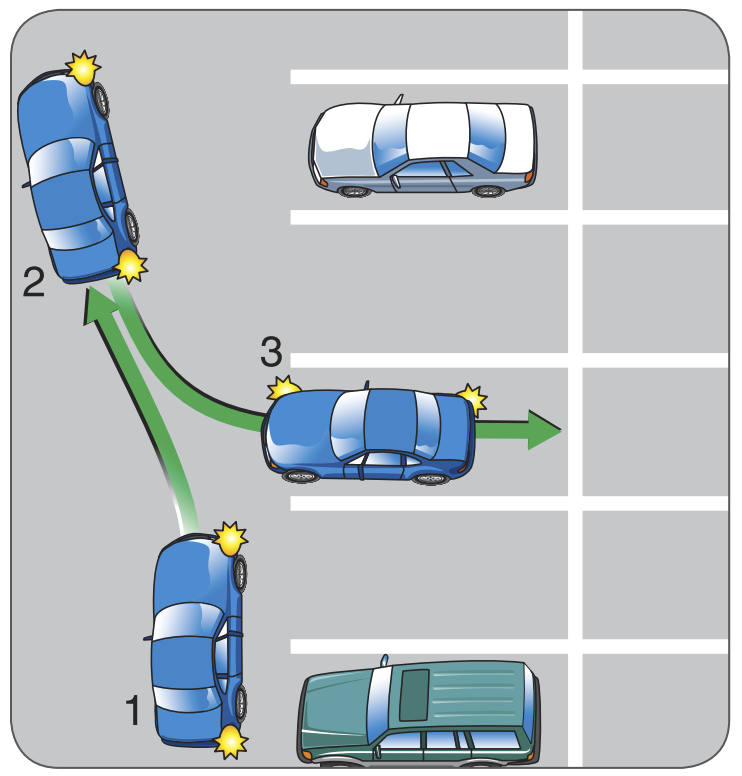
When a pull-through stall isn’t available, reversing into a stall allows the best field of vision for the driver and allows for a pulling out when exiting the stall. Negatively, if you pull into a stall and then have to reverse, you limit your ability to have an unobstructed view of pedestrians or vehicles in the travel portion of the parking lot.
The benefits of the “swing out method” of backing into a parking stall allows for a full 360° view of any hazards and full vision of the parking stall prior to backing into it. When you “swing out” to back in, your vehicle position supports your right turn signal confirming your intent to others:
To execute a “swing out” reverse stall park (to the right):
- mirror check and signal right as you approach the stall
- drive slightly past the stall and position the vehicle on a 45° left angle, making sure other vehicles cannot move in behind you
- shift into reverse and complete a 360° check
- locate stall lines in your side mirrors
- turn and look through your back windshield
- begin to reverse slowly and steer right, aligning the rear wheels with the stall
- as you reverse make quick glances forward, ensuring clearances and identifying hazards
- continue backing, gradually straightening the wheels, until you are fully in the stall and cleared of the travel portion of the parking lot
Reverse Parallel Parking
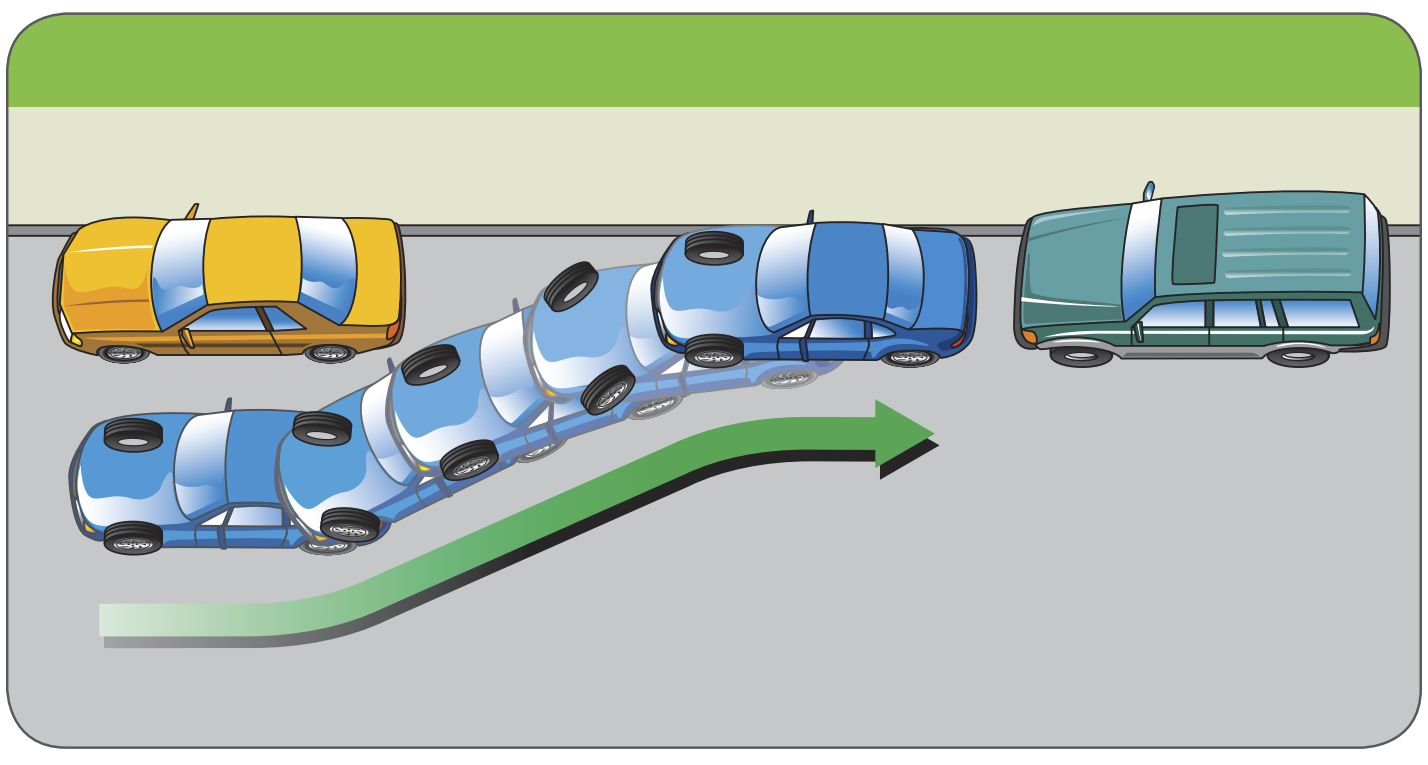
Some drivers avoid reverse parallel parking at all costs but many parking areas, specifically residential areas, require this skill. Can you imagine never visiting a friend because you wanted to avoid having to parallel park in front of their house?
While the challenge here certainly comes in the skills and accuracy required to successfully parallel park, it will improve with practice! To successfully parallel park, you will need to know a few things: the size of your vehicle, the appropriate space needed (one and a half car lengths), when and how to use your signal, and how to complete 360° checks. You may actually find yourself preferring to parallel park in areas where you have the option to, such as shopping and leisure centres, once you have grown comfortable with this skill. And, you can visit your friends freely without any parking-phobia!
Bonus: since many people really do try to avoid reverse parallel parking, you may be more likely to find prime parallel parking stalls that others pass up for reverse, drive-in, or pull-through stalls.
To execute a parallel park (to the right):
- check traffic and signal right as you approach stall
- stop alongside and one metre away from the car ahead of your spot, keeping your rear bumper even to the other vehicle’s rear bumper
- shift into reverse and complete a 360° to select a gap in the traffic flow
- turn and look through your back windshield
- start backing, turning the wheel sharply to the right, until you are at a 45° angle to the curb
- as your front door passes the rear bumper of the car ahead of your spot, straighten the wheels and continue backing
- once your front bumper is clear of the car ahead, turn the wheels sharply to the left and continue backing slowly
- as you reverse make quick glances forward, ensuring clearances and identifying hazards
- check the side mirror for distance to the curb (within 30cm)
- stop before contacting the rear car
- move forward slowly, straightening the wheels, and stop when positioned between both other cars
Hill Parking
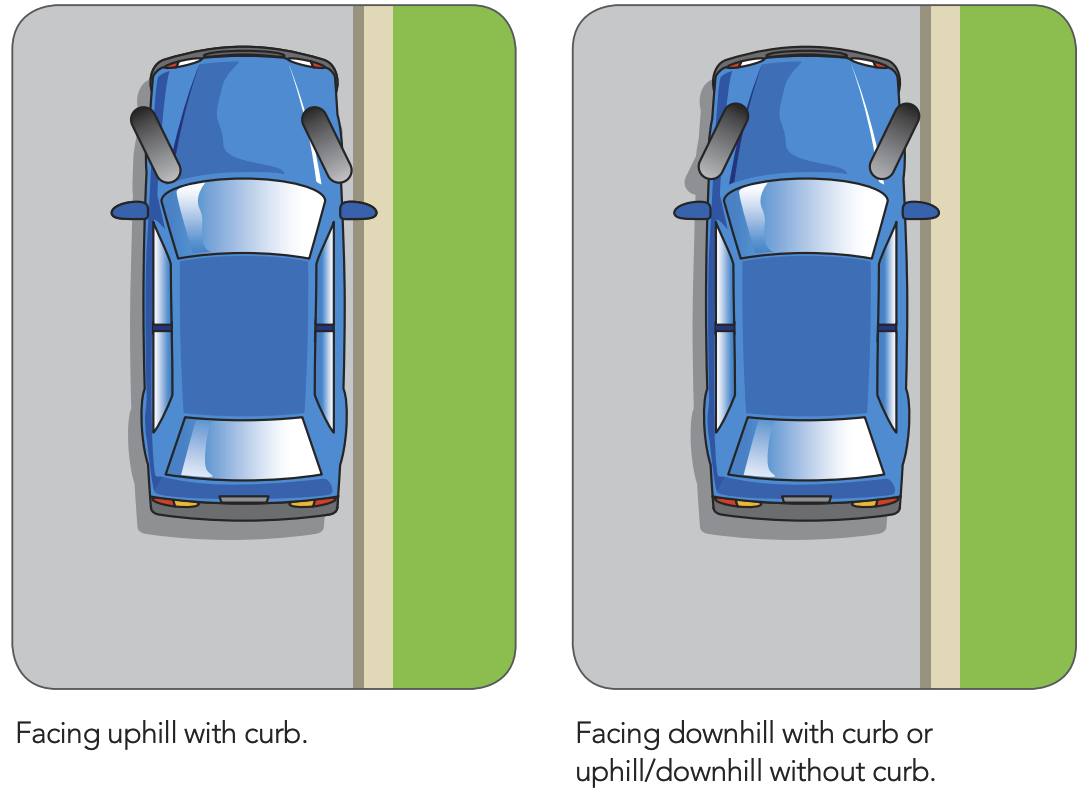
When parking on a hill (with or without a curb) or downhill, the direction you turn your front wheels when you park matters – you’ll want to ensure your front wheels are turned appropriately to prevent your vehicle from rolling into traffic if it becomes disengaged.
If parking uphill without a curb or with a soft/mountable curb, turning the front wheels to the RIGHT ensures if the vehicle rolls, it will go off the road rather than into traffic.
If parking uphill with a full curb, you want to turn your front wheels to the LEFT so the front tire will catch the curb should it start rolling.
For downhill parking with or without a curb, turning your wheels to the RIGHT prevents your vehicle from rolling since the front tires will be stopped by their contact with the curb or in the case of no curb, ensures the vehicle will roll off the road rather than into traffic. Using your parking brake is recommended as a safety precaution.
Parking on a hill with a standard transmission vehicle, the front wheel direction is the same, however, gear shift selection is important.
- Uphill or level ground – Place the vehicle in “first” gear
- Downhill – Place the vehicle in “reverse” gear
Once you have parked your vehicle, making sure that it is secured properly as per the BC Motor Vehicle Act (MVA Part 3, Section 191):
Leaving parked vehicle
1.) A motor vehicle must be equipped with a lock or other device to prevent the unauthorized use of the motor vehicle.
2.) A driver must not permit a motor vehicle to stand unattended or parked unless the driver has
a.) locked it or made it secure in a manner that prevents its unauthorized use, and
b.) if the motor vehicle is standing on a grade, turned the front wheels of the vehicle to the curb or side of the highway.
--
While some drivers try to avoid certain parking situations, it’s an important driving skill to know how to park wherever you go! If you want to expand your parking knowledge even further, check out our blog on parking lot etiquette.

